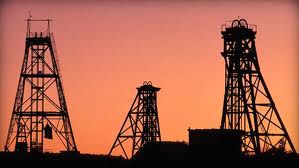Global banking and asset management group Investec is working on a proposal to build a 50MW solar PV power plant near Kalgoorlie, in what is likely to be the first solar plant of its size in Australia.
Investec is hopeful of sealing land tenure at Mungari, about 26kms from Kalgoorlie, in the next month or so, and then will go to market to seek a power purchase agreement and lock in project finance. Construction on the project could begin next year.
The Mungari project is one of two currently being studied by Investec in WA – the other being the Chapman solar PV project near Geraldton, which was originally billed as a solar hybrid but may emerge as a solar PV only project.
WA is emerging as one potentially of the hottest regions for the utility scale solar industry, thanks to its excellent solar resources and relatively high electricity prices.
Bloomberg New Energy Finance last week said that solar PV plants in WA would have an estimated levellised cost of energy of around $157/MWh, compared to more than $190/MWh for new coal-fired generation in the state, where the cost of coal is expensive. BNEF expects the LCOE of solar PV to fall below $100/MWh by 2020.
Despite this, and helping fund the country’s first utility scale solar plant, a 10MW facility near Geraldton, the conservative state government is focused on new coal-fired generators, and is currently restoring its ageing Muja coal fired generator near Collie (and facing a major cost blow-out).
Investec project manager Lynne Lagan said Kalgoorlie made sense because of its excellent solar resources and its location at the edge of the South-West Interconnected System – the grid that services the south west corner of the state.
Lagan said there was a single 220kW line going to Kalgoorlie, so a limited amount of generation could be brought in. “It makes sense to put some generation in this part of the network,” she told RenewEconomy by phone from Kalgoorlie on Tuesday.
“That’s why chosen this location. We been working on project for 18 months on land tenure and we are now looking to finalise those arrangements.”
Lagan said Investec’s numbers on the cost of the solar plant were about the same as Bloomberg New Energy Finance. And she noted there was a huge amount of interest from miners, many who operate on remote locations but are forced to truck in gas or diesel at horrendous costs – often at around 400/MWh or even more. Building this plant could open up further opportunities.
“This sort of project makes sense regardless of whether it considered as a “renewables” project,” she said. “There is a lot of expensive diesel generation here and we are having discussions with some of mining operations. They just want power that makes sense at a sensible price.”
Lagan said it was possible that Investec would sign a power purchase agreement directly with a local mining operation, given the limited options for a PPA with a utility. Mining loads of around 30MW would suit the planned 50MW plant well.
Indeed, there were between 30 and 40 representatives from the mining community and other industrial groups at a special meeting convened in Kalgoorlie by the local council to discuss solar options in the region. Speakers included Oliver Yates, beamed in via Skype from his offices at the Clean Energy Finance Corporation in Sydney, and the Greens Senator Scott Ludlam. Another 60 or 70 people attended a public meeting in the evening.
Among those at the closed morning meeting were representatives of Barrick Gold, Xstrata, Anglo American, KCGM (the owners of the Kalgoorlie Super Pit), Horizon Energy, Western Power, and several engineering companies.
The Greens this week unveiled a pathway to a 100 per cent renewable grid for the SWIS by 2029, and want Kalgoorlie to be one of the key solar hubs – including not just solar pV, but solar thermal power stations with storage.
Ludlam is hoping that institutions such as the Australian Renewable Energy Agency or the CEFC can help fund the installation of next generation technologies such as solar thermal and solar thermal and storage technologies in the region. “If we can get a project here, that will make it easier” to demonstrate the attraction of solar thermal, he told RenewEconomy.
A report by consulting group Evans & Peck in 2011 found there was huge potential for solar power plants in the Pilbara and Mid West mining regions. The study it prepared for the Australian Centre for Renewable Energy said “there appears no better place for renewables to compete on cost,” but the biggest barrier was cultural. “The appetite for novelty is low,” the report noted, adding that there is little knowledge of renewable energy in the mining and industry sectors.
That is now changing. In Chile, where miners face similar problems with high grid prices, off-grid locations and excellent sun, miners are underwriting a series of large scale solar plants.
As we reported last month, one 10MW solar thermal energyplant has been commissioned by the Minera El Tesoro mine in Chile to reduce costs on the heating process used for extracting copper by 55 per cent. Even BHP has ordered a 1MW solar plant at its high-altitude copper plant. More are being constructed.
Ludlam said there was clearly a shift in attitude in the mining community.
City of Kalgoorlie Boulder CEO Don Burnett told ABC radio that the region was a perfect and secure location for a large scale solar station because of the guaranteed sunshine.
“It’s a great location for a solar proposal and the benefits to the city and the region would be immense, but also it’s a great opportunity for the state and federal governments to be involved in innovation in sustainable energy.”








